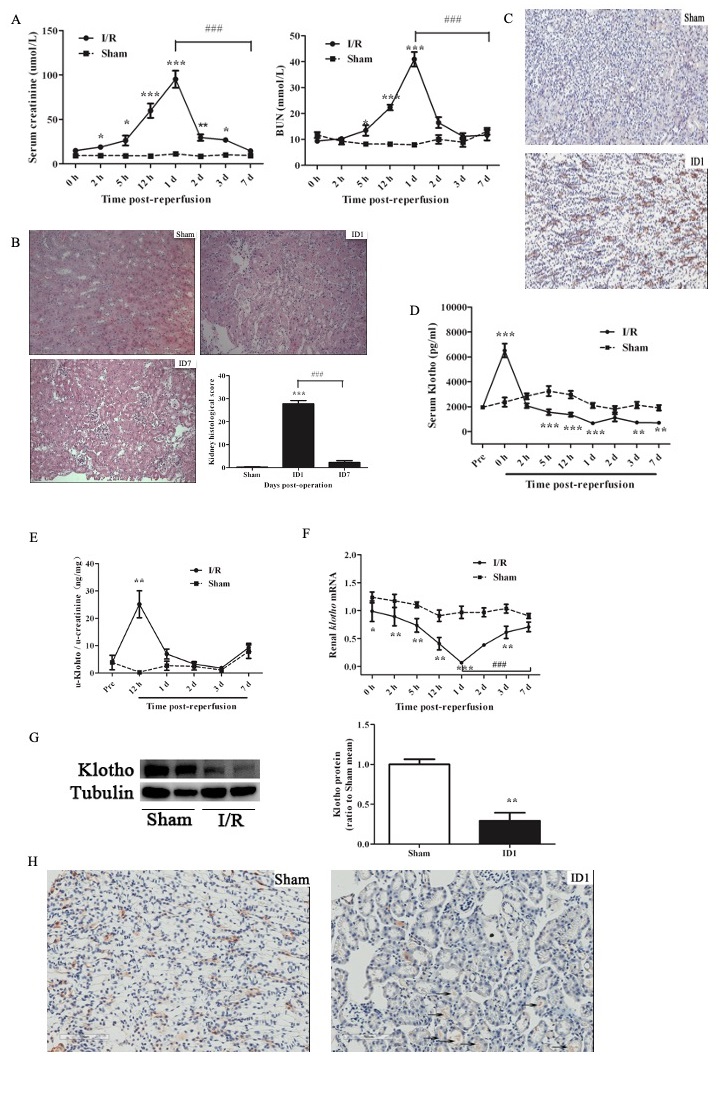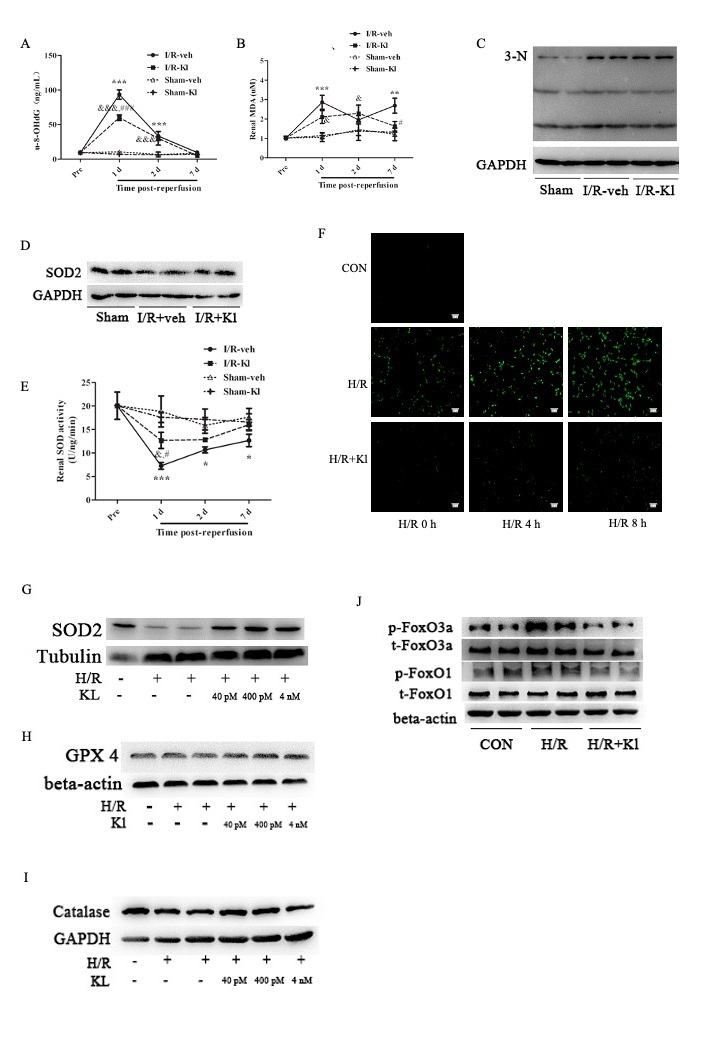Corresponding Author: Leyi Gu
Department of Nephrology, Renji Hospital, School of Medicine,
Shanghai Jiao Tong University, 160 Pujian Road, Shanghai (China)
E-Mail guleyi@aliyun.com
Erratum
In the article by Qian, et al., entitled “Klotho Reduces Necroptosis by Targeting Oxidative Stress
Involved in Renal Ischemic-Reperfusion Injury” [Cell Physiol Biochem 2018;45(6):2268-2282,
DOI: 10.1159/000488172], following publication the authors have found that due to carelessness
for ID7 in Fig. 1B a picture has been used, which has already been published in another paper by
the same research team, and that the image for t-FoxO3a in Fig. 6J had been horizontally flipped.
The corrected Fig. 1 and Fig. 6 are displayed below.
Additionally, the authors would like to correct the legend for Fig. 1: “(n = 5)” should be corrected
as “(n = 4)”. The following Fig. 1 is therefore displayed with the corrected figure legend.

